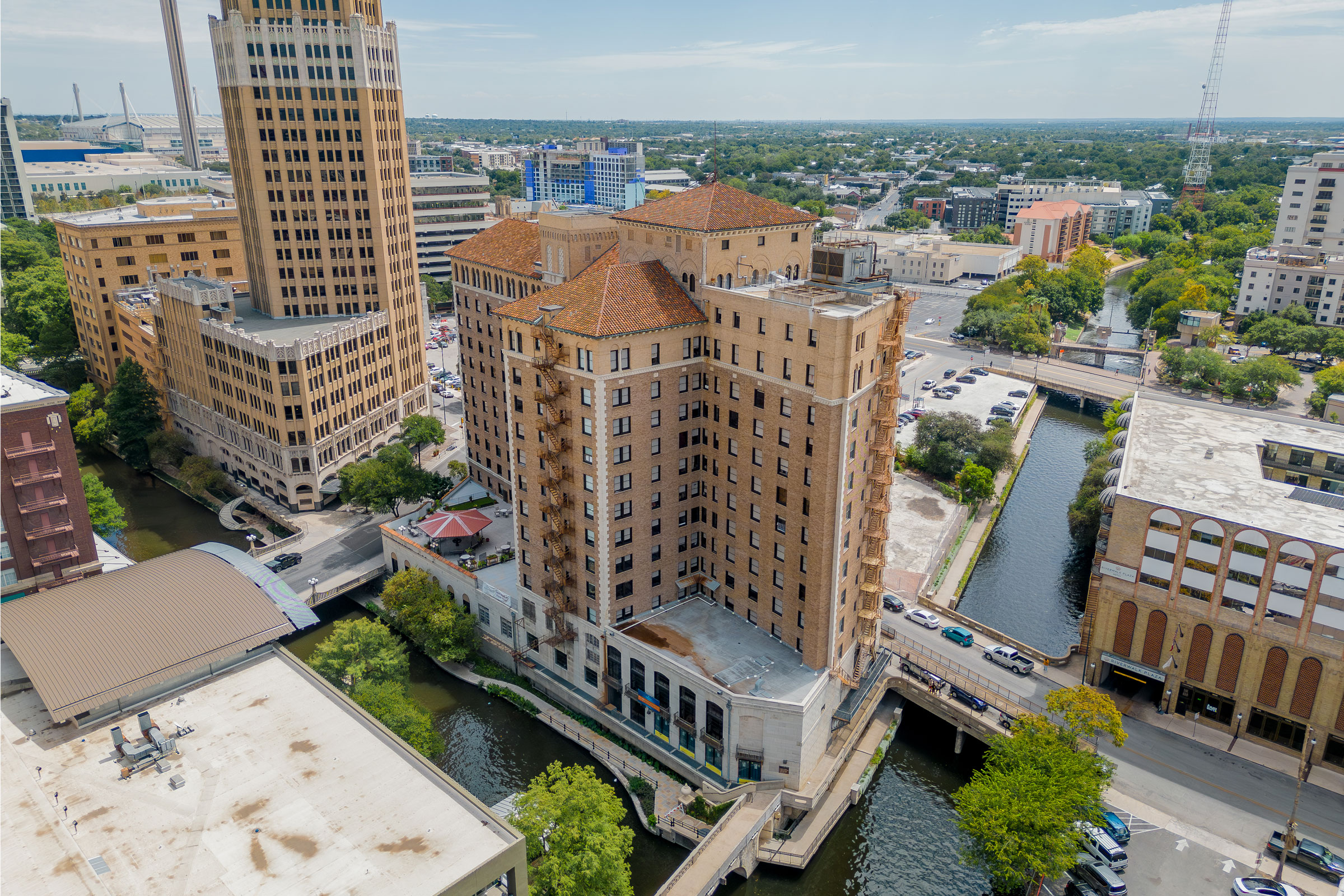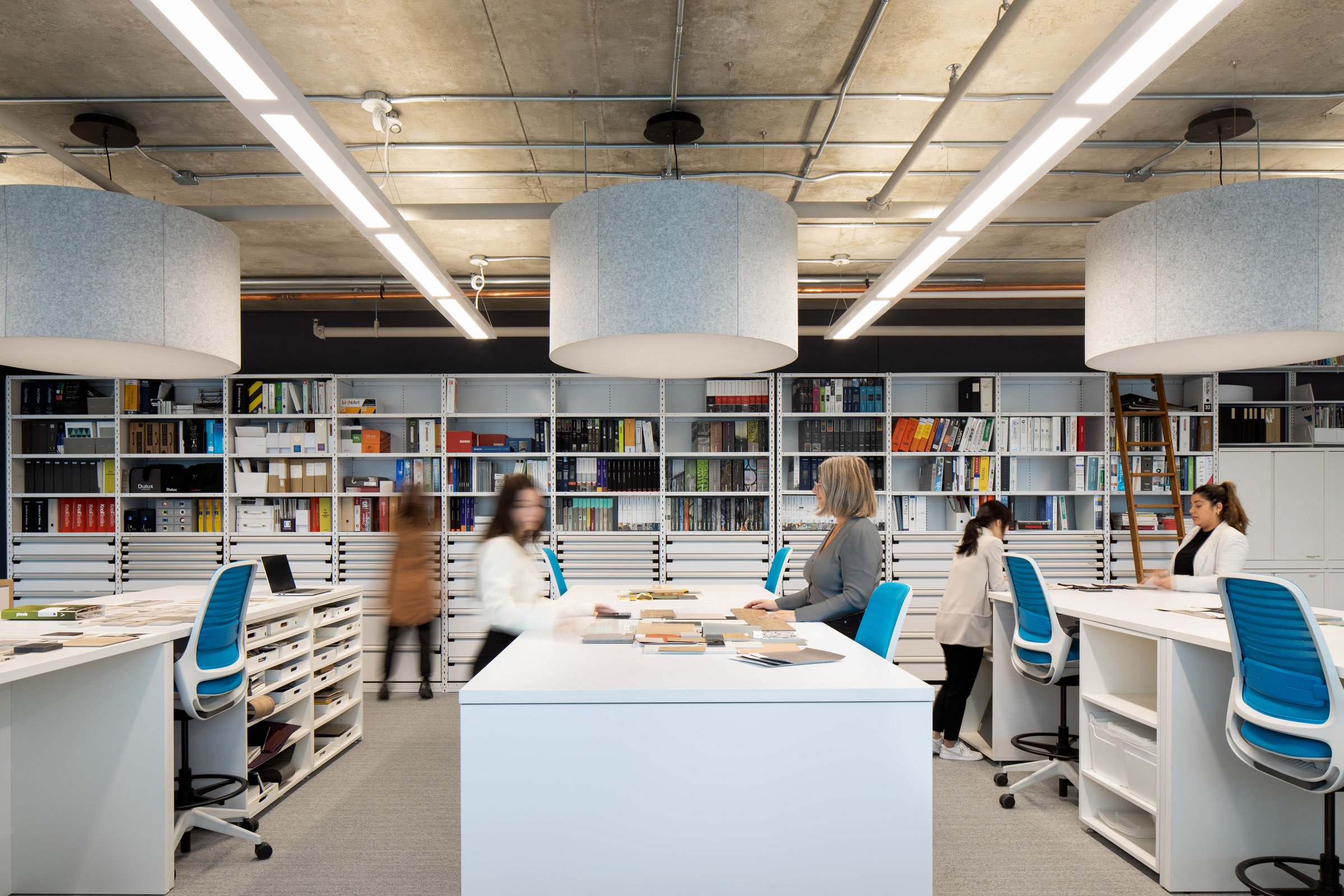Can radiant systems be used in a commercial building as the sole sensible heating and cooling system?
This used to be a question on the cooling side, since building loads were such that available ceiling area was often insufficient for radiant systems that typically were operating at 58 to 62°F in order to stay above dew point. In older buildings the loads were often 25 to 35 BTUs per square foot, and it was not uncommon for us to see 40-50 BTUs/sgft especially along perimeter zones. If perimeter zones had poor quality envelopes or high emissivity glass, loads could be much higher than the available output. So this would oftentimes indicate 90 to 95% of the ceiling (or more in worst cases) needed to be active to satisfy sensible loads under the design conditions. This of course left no room for lights or diffusers to introduce ventilation air or any other fixtures normally mounted on the ceiling.
It is important to recognize at the outset that radiant can only treat the sensible load in the space, and that all radiant systems still require fresh air ventilation for occupants and humidity control. The introduction of radiant eliminates the need to increase the amount of air introduced into the space above that required purely for ventilation and dehumidification. This would substantially reduce the fan energy associated with larger all air systems by 40 to 50% or more.

Gensler’s office in San Diego, California is a great example of radiant waves applied in an open space for both the aesthetic and functional advantages they provide. Photo by Ryan Gobuty
Because a radiant panel system typically operating in the 58 to 62°F range has an output of 25 to 30 BTUs per square foot, often times radiant systems as mentioned would need to cover the full ceiling to meet sensible cooling loads associated with the typical building.
In an older building, the higher sensible loads associated with a poor façade often necessitate an increase of the amount of air introduced into the space above that required, purely for ventilation and dehumidification to cover the sensible load that the radiant could not handle. This additional ventilation air reduced the overall energy efficiency of the project because the savings was part of the reason to use radiant. Fortunately with many projects, especially LEED projects, the extra ventilation above minimum requirements was encouraged for better fresh air to occupants and even earned the engineering teams extra points.
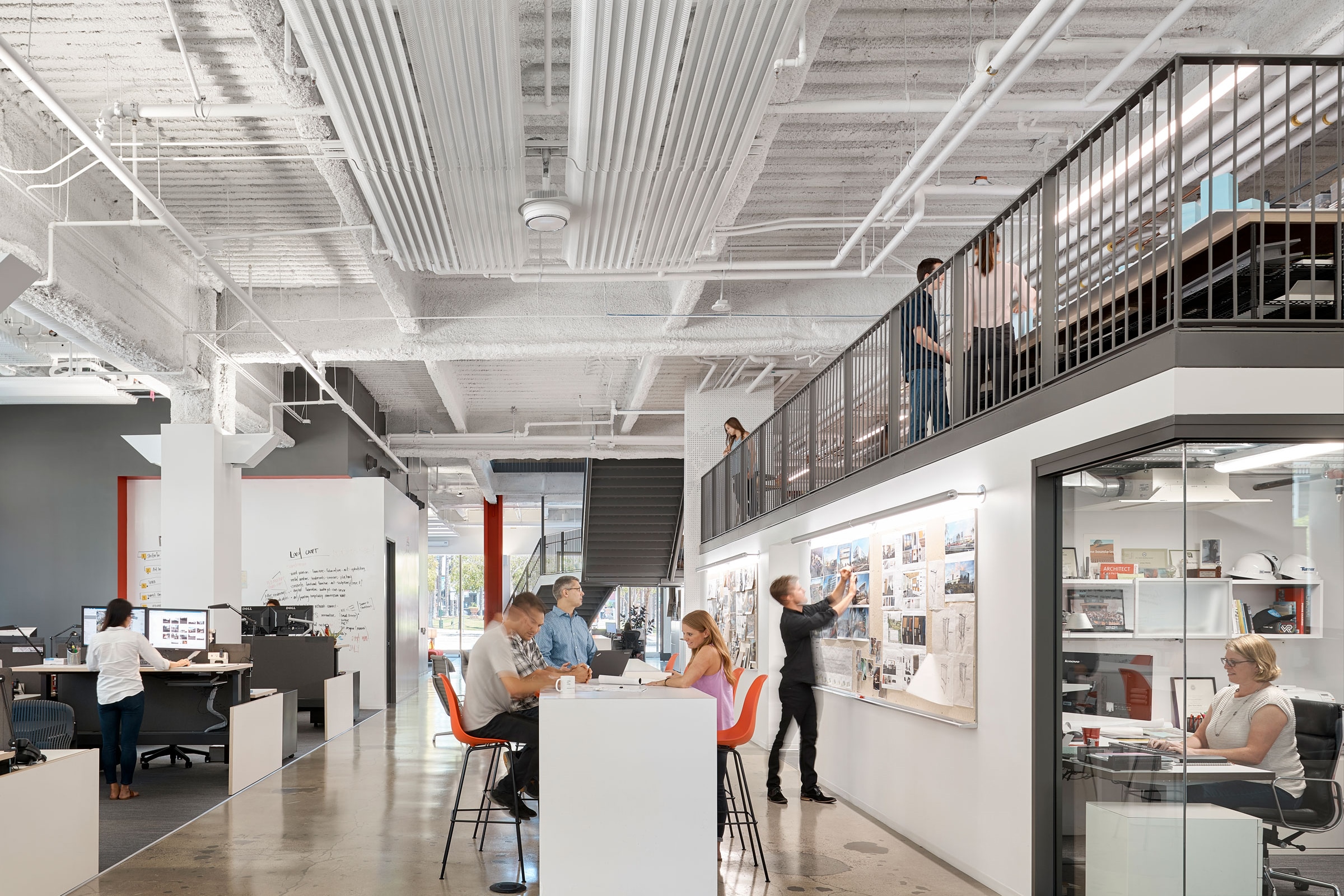
Photo by Ryan Gobuty
An Era of New Innovation
However, several things have changed over the past 10 to 15 years. Now buildings are much more energy-efficient, with much better energy-efficient envelopes—more insulation, reduced glass surface area, sun shading, or better quality low-emissivity glass. As engineers attempted to reduce the energy profile of new buildings, these high loads have been steadily reduced. Best practices from LEED and Net Zero buildings have dropped even perimeter loads to under 20 BTUs per square foot in cooling, which now makes it much easier for radiant systems to cover the complete sensible loads.
During this time, manufacturers have also come up with other innovative products that are passive radiant combine to include a conductive component, such as radiant waves and sails. These products are useful in reducing the amount of ceiling that needs to be covered because of their increased and more concentrated output.
Can Radiant Systems Help with Health Concerns?
One of the other benefits of radiant systems is that, because they require a dedicated outside air system with fresh makeup air, they eliminate recirculated air from all air systems. Elimination of recirculated air means that we can ensure only fresh air to the occupants, and by using these ventilation methods, we can make sure we exhaust stale air or contaminated air out of the space continually. This can prevent cross-contamination between rooms used for different activities, as well as isolating individuals and areas from each other. This is another benefit of radiant systems in the age of COVID-19.
Another advantage of the radiant system is that radiant is very comfortable to occupants, mainly because the systems operating temperatures are very close to the desired room temperatures. Additionally, radiant also heats or cools objects in the space rather than the air. Both of these factors tend to offset or minimize cold drafts or hotspots.
This comfort factor also helps with the energy efficiency because it allows us to operate cooling systems at higher thermostat settings and heating systems at lower thermostatic settings since radiant heat transfer improves your overall thermal comfort at lower (in heating) or higher (in cooling) room temperatures. The operative temperature is the temperature the human body feels in the space. This temperature takes into account the mean radiant temperature, along with air temperatures and velocities, to help asses overall occupant comfort. What introducing a radiant system does is effect the mean radiant temperature, allowing for the room air temperature to be set a few degrees higher in cooling or lower in heating without affecting the occupants overall thermal comfort.
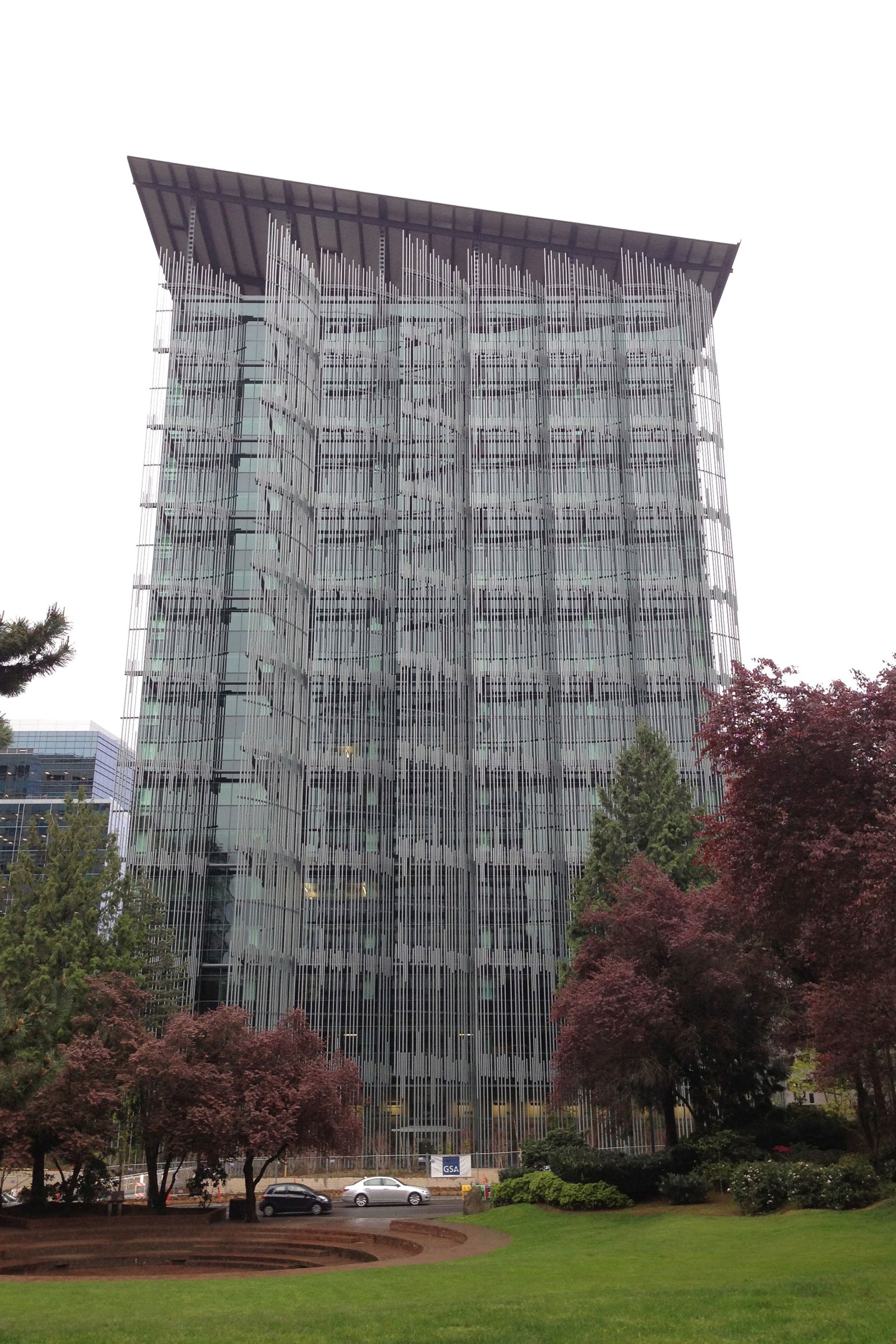
The Edith Green—Wendell Wyatt Federal Building project in Portland, Oregon, was built in the 1970s. Its renovation in 2013 included making the building more energy-efficient and updated the structure to use radiant. Photo courtesy of Barcol-Air USA
What Types of Buildings are Good for Radiant Systems?
The most energy-efficient buildings with the best envelopes make the best projects for radiant systems. In recent years, those included office buildings, academic buildings, courthouses, and other government buildings.
Although new buildings with tight envelopes are the best applications, many retrofits have been done over the past 10 to 15 years as older buildings have been updated to allow the use of radiant. One example is the award-winning Edith Green—Wendell Wyatt Federal Building project in Portland, Oregon. It was a high-rise steel building built back in the early 70s that wasn’t very energy-efficient. Remedying its energy efficiency was one of the main reasons for their renovation. The building was updated with solar shading on two sides (SE and SW), and the hanging trellis gardens were added on the northwest side. This allowed for lots of daylight into the space but reduced the overall solar loading to a level where radiant ceiling system was feasible. This building renovation, completed in 2013, was awarded a LEED Gold designation and also recognized as the most energy efficient high-rise retrofit building in North America.
The Samuel Trask Dana Building project at University of Michigan was another earlier example of a retrofit. In this case, it was an old historic academic building built in the 1890s. This presented the project with some unique design constraints, since the old glass and leaky façade were part of the historic style of the building and could not be changed. In order to help offset the high loads in the building, panels were assembled in the cloud, which allowed recirculation of air on the backside. By adding fans in certain locations to increase air passing over the panels, they were able to increase the output from the panels.
Part of the energy efficiency of this building is the fact the engineer was able to use return water from the campus-chilled water loop as the supply water to cool this building, something that’s only possible with a system that allows operation at higher temperatures of 58 to 62°F for cooling. This also helps campus-chilled water loop maintain a higher delta T even in the winter months and increased efficiency for the whole loop.
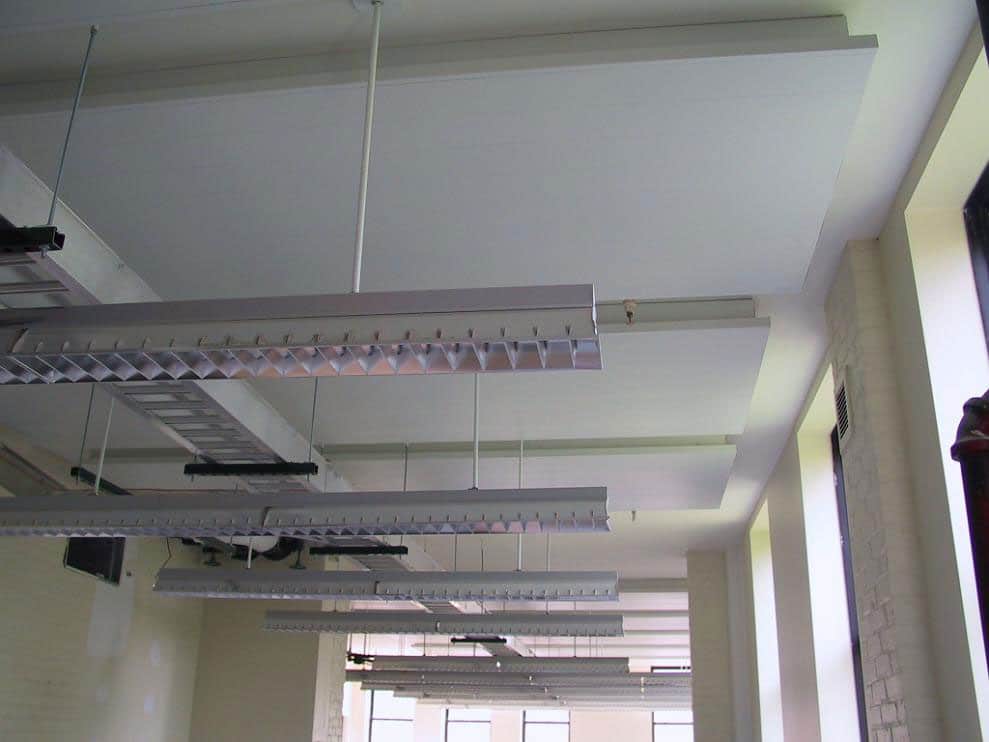
Inside a classroom in the University of Michigan’s Samuel Trask Dana Building. Photo courtesy of Barcol-Air USA
A newer and more contemporary project was the Yale Rudolph Hall building set in New Haven, Connecticut. It used the standard radiant panel ceiling with large panels and activation was wall-to-wall. It was a classroom building with some office space and all lights and services (video overhead projectors and electric power channels) for classrooms that were built into the ceilings. Because this project is located in a northern climate, heating was as important as cooling, but because of the large area covered and activated to allow summertime cooling, in the heating mode ceilings operated at about 95 to 105°F. This facilitated low-energy use by allowing the condensing boilers to operate at low-energy efficient temperatures. Also, this low operating water temperature in heating allows for other energy efficient systems, such as thermal storage solar, heat pumps, or geothermal to provide sufficient temperature for the heating application. So many options become available to the designer while increasing the health, comfort, and efficiency of the project.
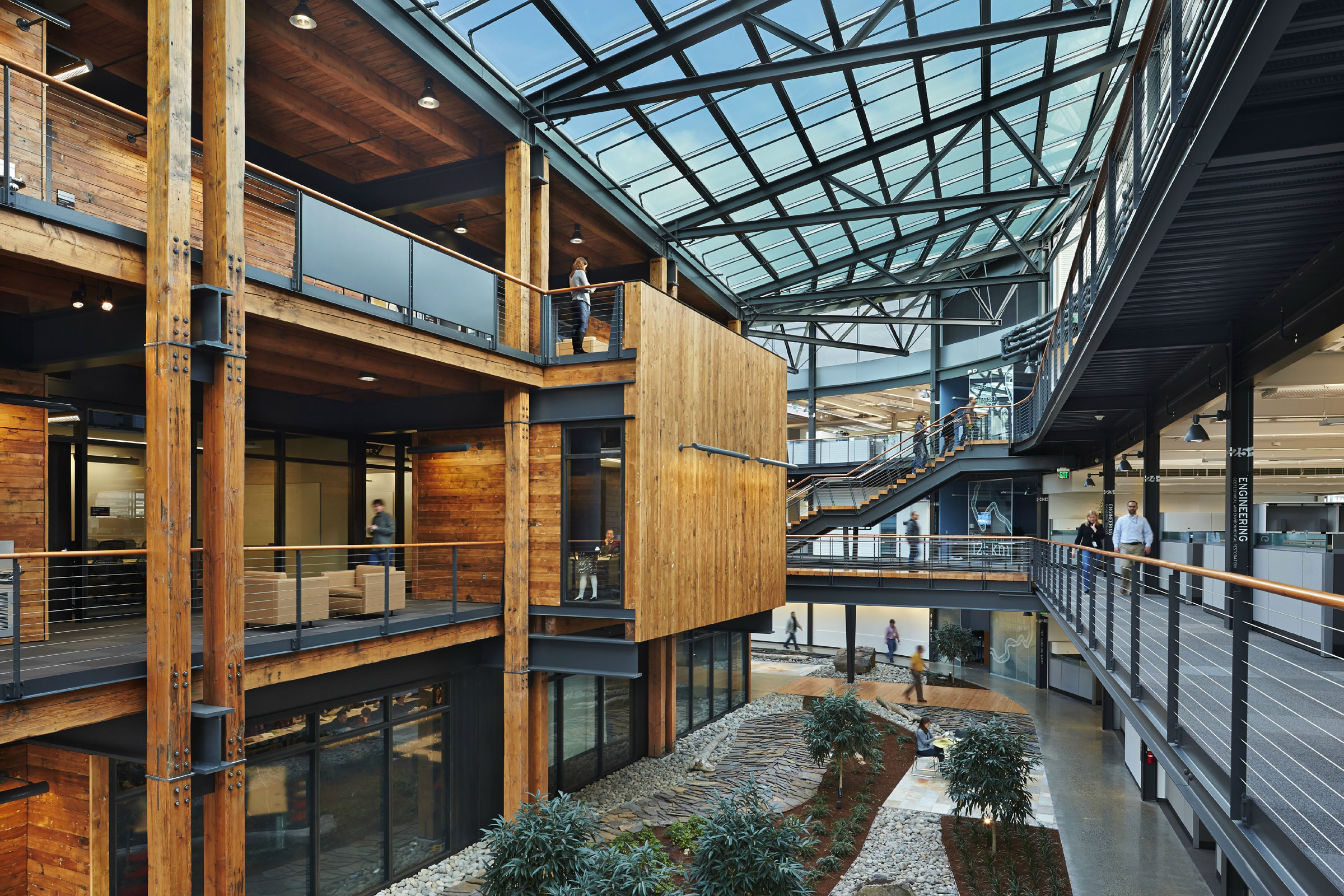
A look inside Federal Center South, where open offices back up to the building’s atrium. Photo courtesy of Barcol-Air USA
Radiant systems come in many shapes and forms and can be adaptable to many types of buildings, as well as the desires and visions of the design team. One recent example was Federal Center South, the Army Corps of Engineers building in Seattle, designed with an open atrium with several floors of open offices opening up to one side of the atrium. Those offices had no ceilings, so the product that was selected by the architect and engineer was the radiant wave. The output of the wave in cooling is typically between 70 and 90 BTUs per square foot, so it has three to four times more output than from a standard aluminum ceiling panel. This product is a combination of radiant panel made from copper and aluminum, but it has aluminum waves or blades with copper tubes attached to the back for water flow. This design allows for air transfer over the wave increasing the output significantly on the convective side. This allows a much smaller footprint and reduces installation costs. It also negated the need for ceiling. It still provided the radiant output and comfort associated with the radiant system that the architect and engineer wanted for this project.
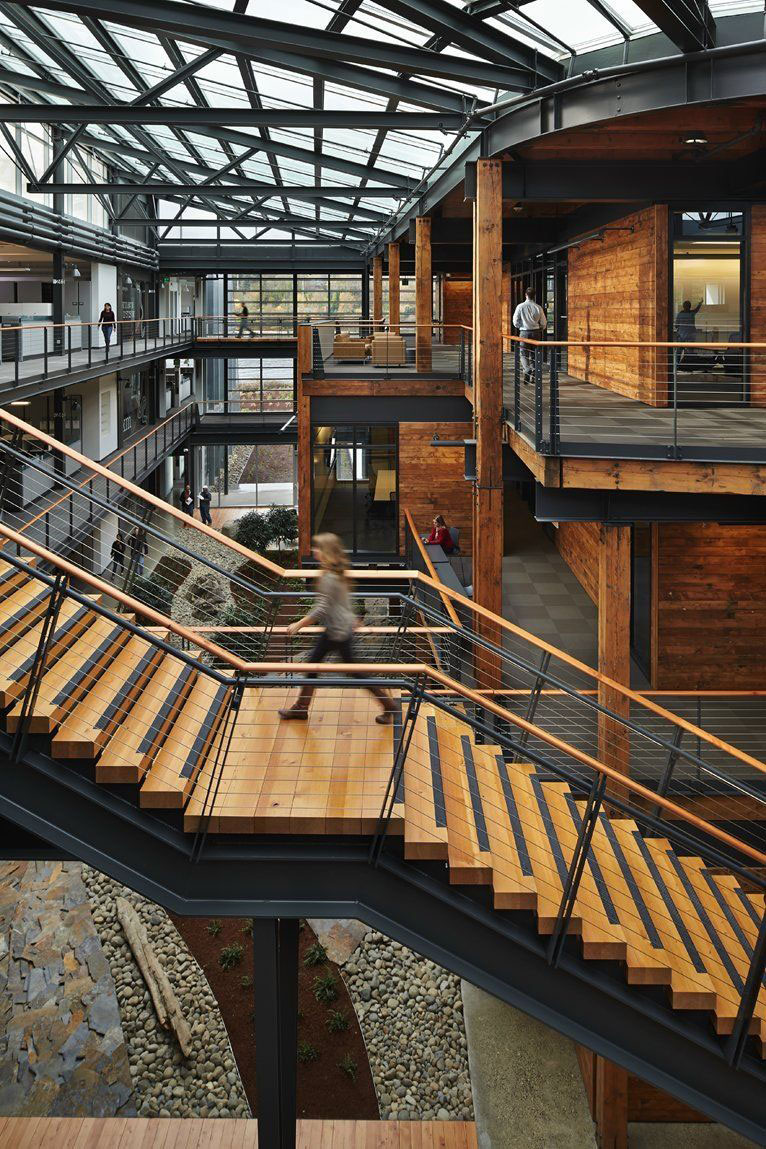
Photo courtesy of Barcol-Air USA
Radiant Design Flexibility
Radiant systems also offer flexibility on the air side allowing the selection of an air system that best fits the project. Since we’re operating with a dedicated outside air system, much smaller quantities of air need to be introduced to the building, which, as we mentioned earlier, has much to do with the energy savings of this approach.
In addition to the energy savings, it also allows significant reduction in duct sizing. The lower air volumes provides for much quieter spaces. However, on the air side, how that air is delivered has many opportunities for design flexibility. In the case of the Gensler office building in San Diego, they went with a dedicated outside air system with displacement air supplied at floor. They also decided to use an open-ceiling concept with the radiant waves as the sensible cooling and heating equipment. To help ensure good circulation, as well as increase panel output, they added large paddle fans up in the ceiling area with the radiant waves.
Increasingly popular is the combination of active chilled beams with radiant perimeter systems in radiant waves and sails or radiant panels. By combining these two systems we can limit the radiant portion to that which covers sensible loads and direct radiant comfort loads, leaving fresh air makeup for ventilation and dehumidification, as well as the balance of sensible heating and cooling in non-radiant areas. This can optimize the design to provide the best overall comfort and, because the active chilled beam has a higher concentrated sensible capacity at a lower cost per BTU, the overall system can be optimized for cost as well.
What About Maintenance?
Since these systems have no moving parts—no local fans or motors—they require little to no maintenance. The systems can be made to blend in with the ceiling so that they look exactly the same as existing ceilings or added in as an architectural feature.


